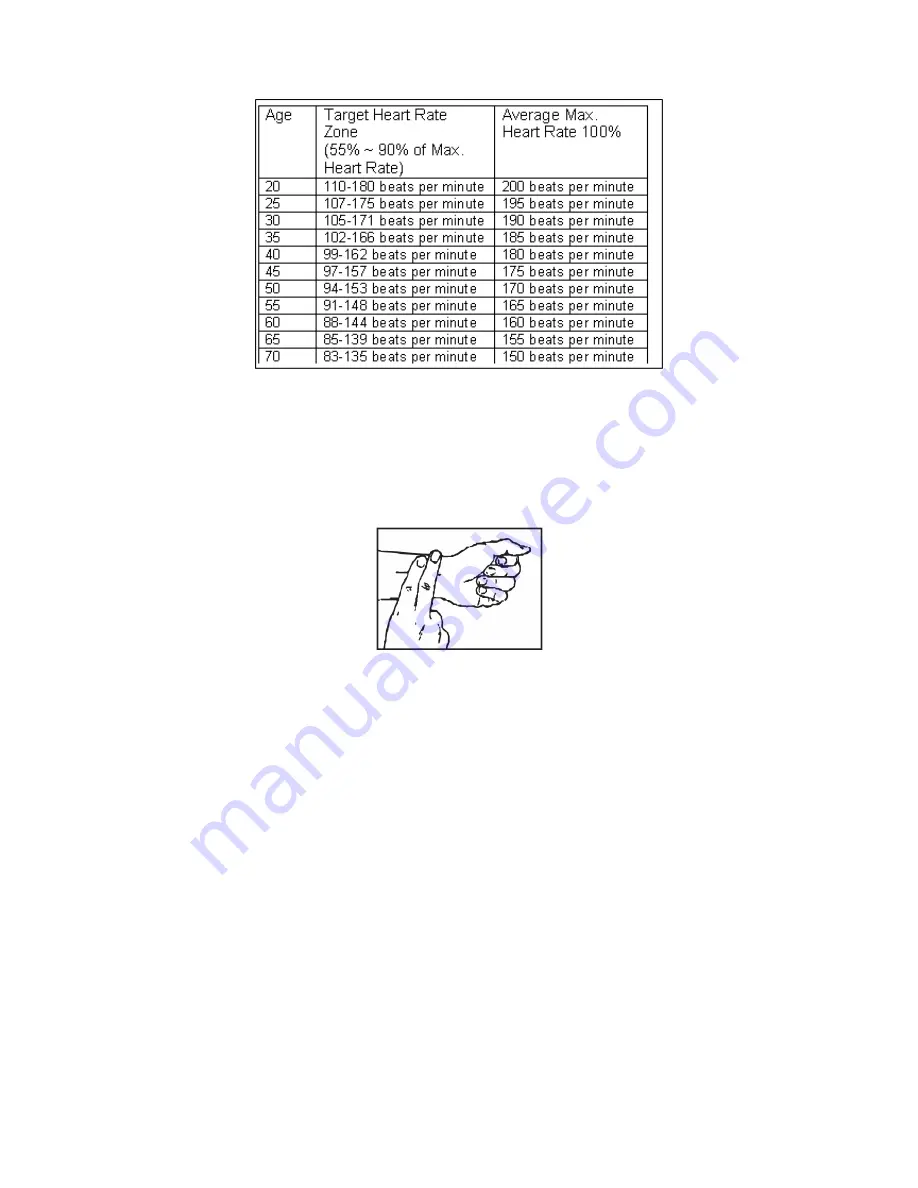
During the first few months of your exercise program, keep your heart rate near the low end of your target zone
as you exercise. After a few months, your heart rate can be increased gradually until it is near the middle of your
target zone as you exercise.
To measure your heart rate manually, stop exercising but continue moving your legs or walking around and
place two fingers on your wrist. Take a six-second heartbeat count and multiply the results by 10 to find your
heart rate. For example, if your six-second heartbeat count is 14, your heart rate is 140 beats per minute. (A six-
second count is used because your heart rate will drop rapidly when you stop exercising.) Adjust the intensity of
your exercise until your heart rate is at the proper level.
WARM-UP AND COOL-DOWN
Warm-up
The purpose of warming up is to prepare your body for exercise and to minimize injuries. Warm up
for two to five minutes before strength-training or aerobic exercising. Perform activities that raise your heart rate
and warm the working muscles. Activities may include brisk walking, jogging, jumping jacks, jump rope, and
running in place.
Stretching
Stretching while your muscles are warm after a proper warm-up and again after your strength or
aerobic training session is very important. Muscles stretch more easily at these times because of their elevated
temperature, which greatly reduces the risk of injury. Stretches should be held for 15 to 30 seconds. Do not
bounce.
SUGGESTED STRETCHING EXERCISES
Lower Body Stretch
Place feet shoulder-width apart and lean forward. Keep this position for 30 seconds using the body as a natural
weight to stretch the backs of the legs. DO NOT BOUNCE! When the pull on the back of the legs lessen, try a
lower position gradually.
32
Содержание SPORTline EG-7820
Страница 5: ...T HAND SOCKET WRENCH 17mm SOCKET WRENCH 13mm WRENCH 17mm PHILLIPS SCREWDRIVER 6mm 5...
Страница 38: ...PRODUCT PARTS DRAWING A 38...
Страница 39: ...PRODUCT PARTS DRAWING B 39...










































